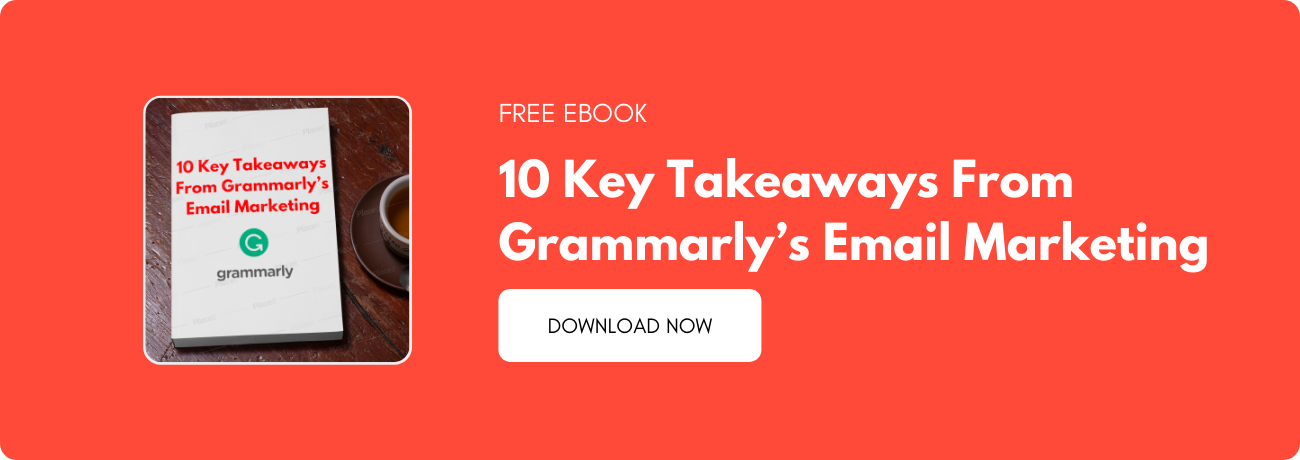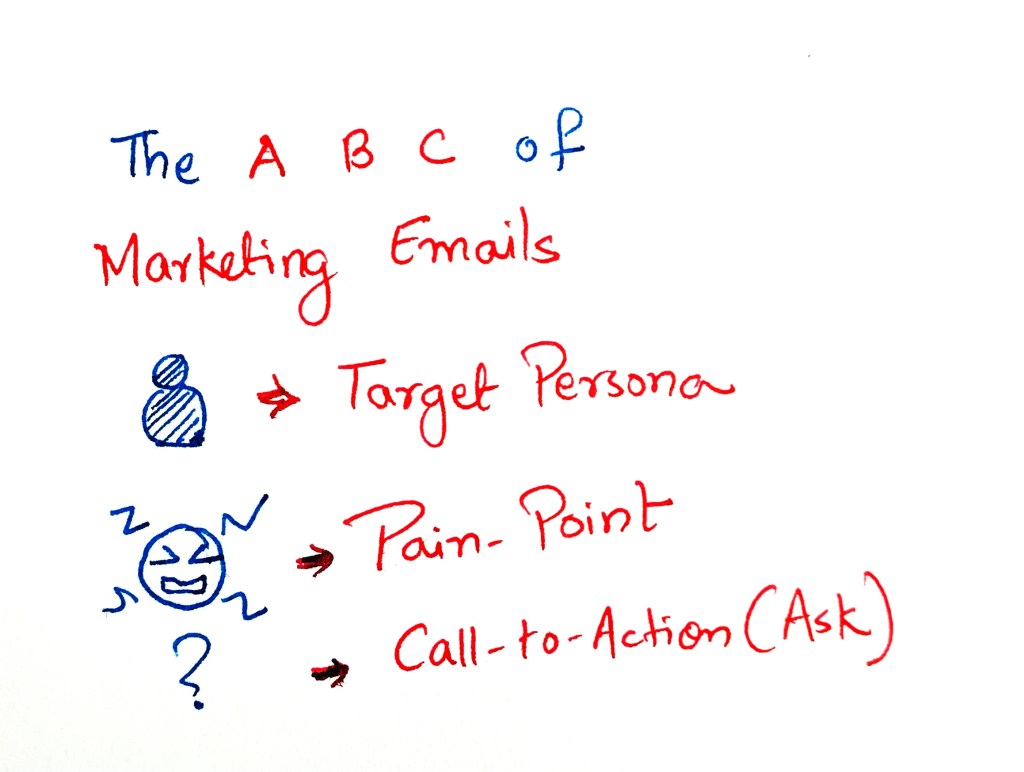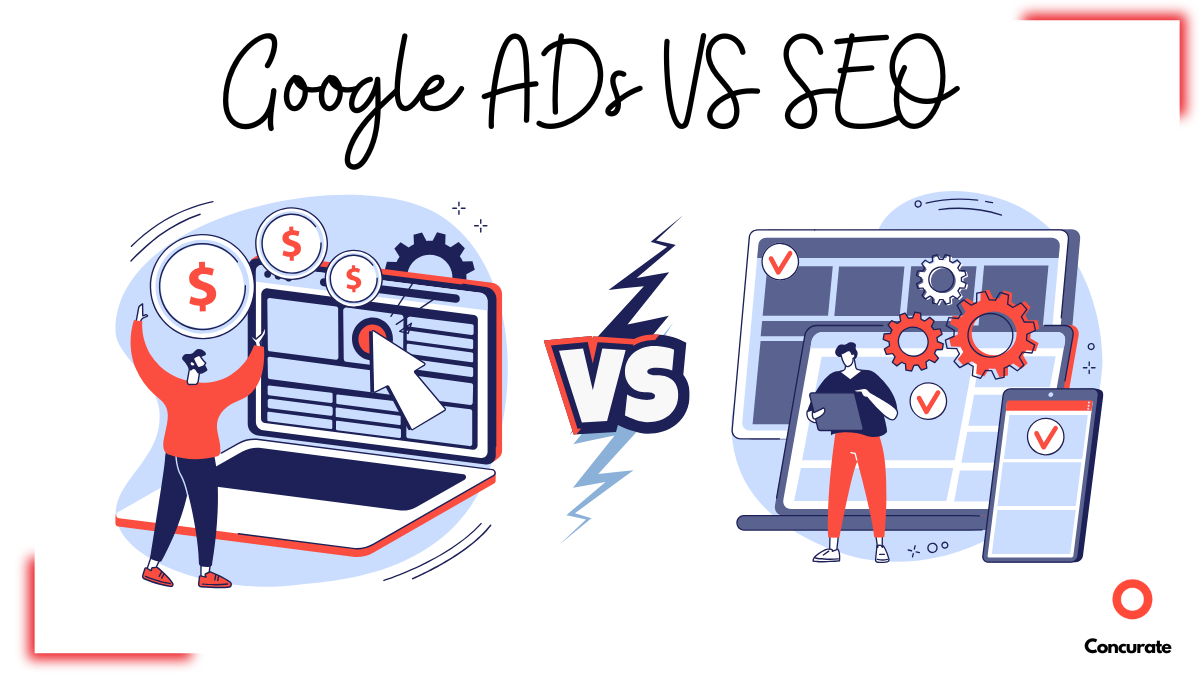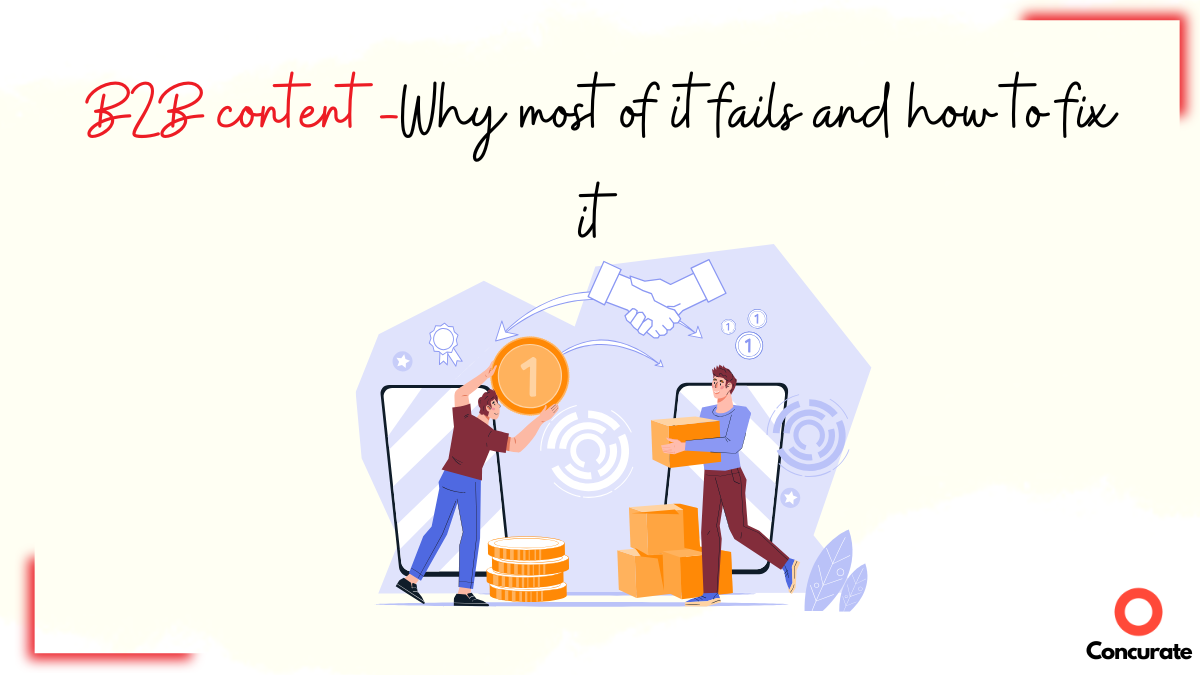“If social media is the cocktail party, then email marketing is the ‘meet up for coffee’. The original 1 to 1 channel.” – Erik Harbison
Up for a coffee 😉 ?
Marketing Emails – A Use Case
John downloaded the IP analytics report from MyCompany’s website two days ago. Kelly, one of the managers at MyCompany, is reaching out to John to understand his goals and discuss how MyCompany can help John.

Target Persona
The most important thing in marketing emails is identifying the target audience for your product, tool, or service. Focus on a single audience, as it helps to emphasize the benefits of the product that the recipient wants.
In this email, John is involved in the R&D and development of automotive products.
Pain Point
Identify the pain points of your target audience and provide ways to alleviate them with the help of your product. It results in increased desire for the offer.
The pain point in the above email is that John is having trouble with the research and analysis of his company’s IP or ideas.
Kelly has mentioned how MyCompany’s services and products can help and benefit John and his company keeping in mind his needs.
Ask – CTA – Call-To-Action
The goal is not just to get into your recipient’s inbox; it’s to increase click-through rates, engage the recipient, and create more conversions.
Kelly asks John for his time to get on a call and discuss his requirements in-depth. This email is focused on the customer, has a personal approach, and includes a clear CTA for further engagement.
Tips for Writing Marketing Emails
Here are some tips to help you draft effective marketing emails:
- Write an intriguing email subject line to increase open rate
- The less personal, the less interesting
- Make the body of your email strong, clear and simple
- Use intrigue or a promise to attract interest
- Present the benefits clearly, with sub-heads
- Use high-energy copy to create a buzz
- Include a very straightforward Call to Action (CTA)

#1. Write An Intriguing Email Subject Line
David Ogilvy said, “On average, five times as many people read the headline as read the body copy. When you have written your headline, you have spent eighty cents out of your dollar.” This principle is still valid today in email marketing.
The subject line is the first thing recipients see. Think of it like a movie trailer. It needs to pique interest and give a preview of what to expect. It should entice the reader enough to open the email.
No: This tool helps you to find out if your idea or invention is new.
Yes: Are you worried that your idea or invention is not new?Your subject line can make or break an email campaign. Grammarly’s email marketing strategy offers valuable insights on how to craft subject lines that drive engagement.
#2. The Less Personal, The Less Interesting
Jake Sorofman rightly said “When you start with what’s at stake for the buyer, you earn the right to their attention”.
Keep the focus on the email subscribers, not the brand. Write in second person. Use more actionable words and keep the tone conversational. Think about how you want the recipient to feel and think when looking your marketing emails.
No: This invention disclosure form will make it easier to capture ideas.
Yes: Doesn’t it drive you crazy when your organisation is not able to capture ideas due to long and complex invention disclosure forms? Well, you don’t have to put up with this anymore …
#3. Make The Body of Your Email Strong, Clear and Simple
Avoid using fancy vocabulary that might confuse the reader. Use short, punchy sentences to keep the email simple and easy to understand.
Great copy in content marketing is about putting your point across as succinctly as possible.
No: Do you ever get the feeling that you are paying too much for your website upkeep and maintenance?
Yes: Looking for savings?
#4. Use Intrigue Or A Promise To Attract Interest
Using words that raise the interest of the recipient and promises to deliver what the recipient might be looking for helps in more conversions.
To make reading the marketing email a great experience, the choice of words is crucial. Appeal to the emotions of the reader to arouse their curiosity.
No: Reduce the time for conducting the search to find out if your idea is novel.
Yes: Discover the secret of quick prior art search.
#5. Present The Benefits Clearly, With Sub-Heads
Enabling the Information Age through Network Computing – Oracle, in this tagline, opens with the benefit of network computing, which is to enable the information age and makes a strong impact.
Talk about the benefits and not just the features of the product in your email message.
Features are the characteristics of the products or services that provide certain benefits. Whereas benefits are the results which the recipient will receive due to the features of the product or service when they use it.
By presenting the benefit of your product in a clear and concise manner, you’ll make it much more appealing to your audience and ultimately drive more conversions.
No: This tool is easy to use for your idea management process.
Yes: Gain a competitive advantage by easily capturing productive ideas using this idea management tool.
#6. Use High-Energy Copy To Create A Buzz
Use strong verbs in active voice. Passive voice is boring and adverbs add to the monotony. Avoid generic marketing terms.
Sometimes instilling the fear of missing out (FOMO) in your recipient helps the energy flow and results in conversion. Give the recipient a reason to respond now, not later. Consider using strong sales-offer messages.
No: Is your website optimized for high sales? Grab the free conversion toolbox and start succeeding.
Yes: Before you leave – don’t miss out on the free website conversion toolbox!The best marketing emails are direct, powerful, and evoke action. Learn how to make your emails irresistible in this guide on writing emails that get opened.
#7. Include A Very Straightforward Call To Action (CTA)
The CTA is the point where your recipient will decide if he/she wants to engage with your brand. It is the most essential piece of email marketing. Focus on the key action you want the recipient to take.
Don’t include multiple CTAs. Keep it simple and easy to identify. Always write a CTA that makes taking the action you’re requesting seem effortless.
No: So why don’t you find out more?
Yes: Simply click here now so you don’t miss out.
Pro tip: If you need 30 standout SaaS growth hacks to attain double the growth for your SaaS business, fill out the form below!
Wrapping Up
Statista says, in 2019, the number of global e-mail users amounted to 3.9 billion and is set to grow to 4.48 billion users in 2024. Email marketing campaigns remain one of the most effective marketing tools with an average Return on Investment (ROI) of 42:1, according to Litmus.
Getting responses to your marketing emails can be tricky. But with the right approach, you can significantly boost engagement. Check out these proven tactics to increase response rates for cold emails.
A great marketing email is short and crisp but at the same time relays the message in an impactful manner.
Focus on a single audience and set one clear conversion goal for your campaign before you start writing and sending emails.
Lay out the benefits of the product or tool clearly and make the message powerful.
Simplicity is the key. Once you are able to catch your reader’s attention, it’ll help in more conversions.
Lastly, as Matt Byrd said ‘Use low commitment CTAs. Emails are invites, landing pages are parties’.
Hope you enjoyed reading this post!
We are sure you would love to read – “Checklist for editing a Written Piece of Work“
At Concurate, we understand that crafting the perfect email campaign requires more than just following the basics. It requires a deep understanding of your target audience, their pain points, and the best ways to speak directly to their needs.
If you want to take your email marketing to the next level and generate real, lasting results, we can help you design a strategy that speaks to your customers and drives conversions.
Let’s connect and discuss how we can elevate your marketing game.






